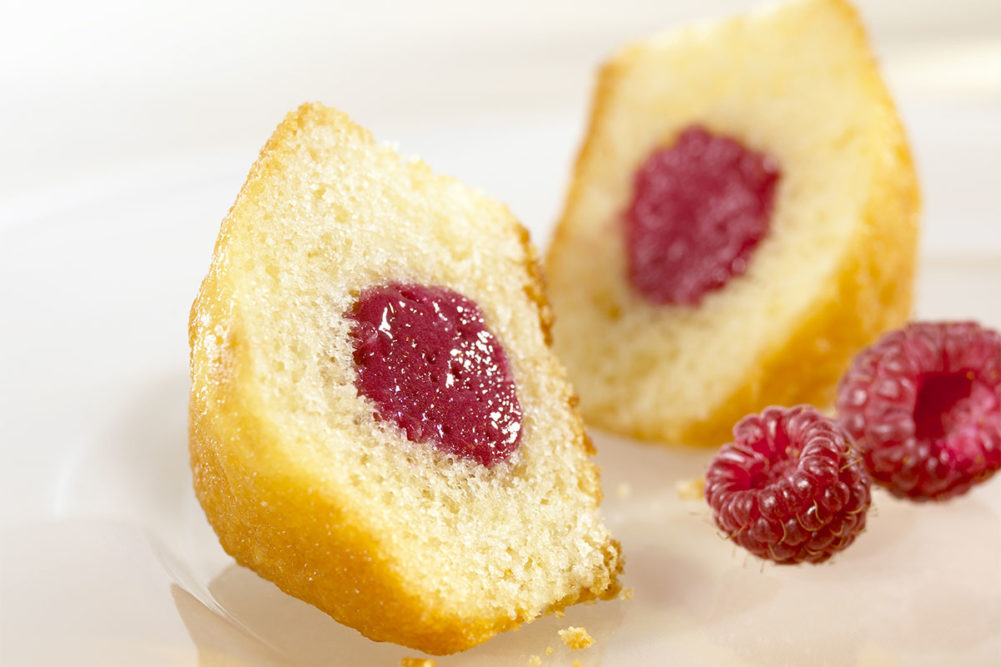Gums and hydrocolloids can improve the stability in bakery formulations because they stabilize the aqua systems.
“They do this by preventing the separation of heavier and light particles,” said McKenna Mills, senior technical services specialist for bakery, Cargill. “By doing this they are able to impart a lot of functionality to pastries, breads, fillings and other applications, but it’s the stabilization of the heavier and lighter particles that gets you there.”
All of this leads to improvements in texture and product consistency. Hydrocolloids are often used for gelation and to increase viscosity,
explained Becky Regan, PhD, principal application scientist, sweet goods bakery applications at IFF — Nourish Division. By maintaining viscosity, batters become more stable, losing fewer gas bubbles. If a batter is holding particulates, these also have an easier time remaining suspended when the batter is stabilized. Another benefit to a more stable batter viscosity is improved flow properties, or batter rheology. This allows batters to be pumped without losing viscosity.
When it comes to dough, hydrocolloids’ ability to stabilize the formulation can improve dough machineability through sheeting, cutting, depositing and shaping.
“Gums are used to create workable, elastic doughs that reduce stickiness and tearing during processing,” said Olivia Benton, food technologist, food systems, Ingredion Inc. “Once baked, these products will retain moisture and have an extended shelf life, whether stored in ambient or frozen conditions, due to the prevention of moisture migration.”
Stabilizing the aqua system is what prevents moisture migration. Hydrocolloids can reduce the amount of free water available in the formulation and reduce moisture loss during storage, which would result in staling and texture issues.
Aqua system stability also makes these ingredients critical to the texture of fillings. Pectin is a commonly used gum for bakery fillings and glazes as it improves their oven stability and inhibits syneresis, or weeping.
Another application that benefits from the stabilizing force of gums and hydrocolloids are value-added breads. When adding a fiber or protein to a loaf of bread, the dough becomes much heavier and could even collapse.
“Fiber and plant protein can be really heavy in a product that is supposed to be light,” Ms. Mills explained. “Gums and hydrocolloids can help the bread stand up and give it more leeway to add in some of those ingredients before the bread will collapse. Adding a hydrocolloid or gum can help you bridge that gap between a normal bread to a bread where you’re really trying to have added value and bring them to a place to achieve consumer acceptability.”
This article is an excerpt from the November 2021 issue of Baking & Snack. To read the entire feature on Gums & Texture, click here.





